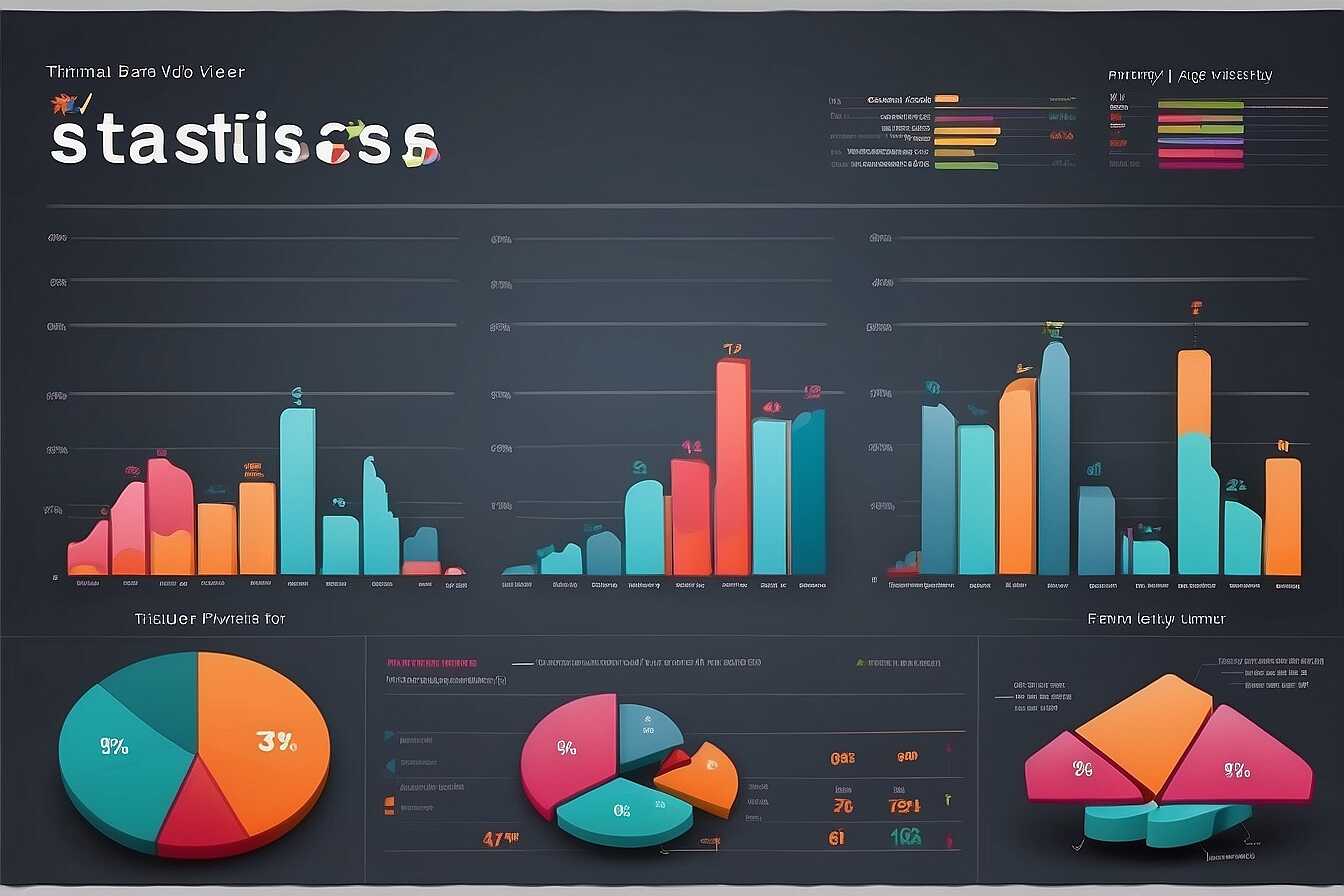Mobile-first indexing significantly impacts your website performance, prioritizing the mobile version of your site for search engine rankings. As more users access websites on mobile devices, optimizing for mobile-first has become essential. At Metrics Rule, we understand that a well-optimized mobile presence can enhance visibility and provide a better user experience, leading to improved site performance. Our expertise in SEO and technical optimization can help you navigate the nuances of mobile-first indexing to maximize your site’s potential.
Overview of Mobile-First Indexing
Mobile-first indexing is a method where Google predominantly uses the mobile version of a website for ranking and indexing. This approach is essential because over 50% of web traffic comes from mobile devices, highlighting its significance for SEO success. Understanding mobile-first indexing helps ensure that your site is optimized for mobile platforms, which is crucial for enhancing overall website performance. With a focus on mobile optimization, you can provide a better user experience while improving your rankings in mobile search results.
Why Mobile Optimization is Critical for E-commerce Websites
Mobile optimization is especially critical for e-commerce websites because they rely heavily on user experience to drive sales. Websites that are not mobile-friendly can lead to slow load times and difficult navigation, which negatively impacts conversion rates. By ensuring that your e-commerce site delivers a seamless mobile experience, you enhance customer engagement and loyalty. Implementing effective mobile-first indexing practices can result in higher visibility on Google, ultimately leading to increased traffic and sales. Data analytics show that mobile-optimized pages have significantly lower bounce rates, proving that mobile-first strategies offer proven results in the competitive e-commerce landscape.
The Importance of Mobile Optimization for Users
Mobile optimization is essential because it significantly enhances user experience, leading to better engagement. A mobile-optimized site improves page speed, ensuring that content loads quickly on devices. This quick load time is crucial since users often abandon sites that take more than three seconds to display. Furthermore, enhanced mobile design increases conversion rates; studies suggest that mobile-friendly sites see conversion improvements averaging around 20% to 30%. By prioritizing SEO alongside mobile responsiveness, businesses can achieve better search visibility on platforms like Google and Bing, resulting in increased traffic and sales.
Key Elements That Enhance Mobile User Experience
The key elements that enhance mobile user experience include responsive design and fast page loading speeds. A responsive design automatically adjusts layout based on the screen size, ensuring all users enjoy a great mobile experience, irrespective of the device they are using. Fast-loading pages are critical; they decrease bounce rates and enhance user satisfaction. Additionally, integrating mobile-friendly features, like simplified navigation and click-to-call buttons, greatly improves usability. Overall, these elements support SEO goals by ensuring websites are crawlable and indexable on mobile, providing excellent performance across mobile search engines.

Google’s Mobile-First Indexing Evaluation Criteria
Google uses several specific criteria to evaluate websites for mobile-first indexing. Key factors include mobile usability, page speed, and responsive design. Mobile usability ensures that your site provides a good user experience on mobile devices. Page speed is critical because fast-loading pages improve user experience and help retain visitors. Responsive design is essential as it ensures your website adjusts to different screen sizes. It is vital to optimize these technical SEO factors to enhance your site’s performance and visibility. A well-optimized site for mobile can boost its rankings significantly.
Understanding Technical SEO Factors for Mobile Indexing
To optimize your website for Google’s mobile-first indexing, it is crucial to understand specific technical SEO factors. These include site speed, which should ideally load in under three seconds to ensure better user engagement. Responsive design is also necessary, meaning your site should be easily navigable on devices of all sizes. You should implement structured data through Schema markup, which helps Google understand your content better and improves indexing. Additionally, using a mobile-friendly sitemap ensures that Google crawls your site efficiently. Consistent mobile optimization can significantly enhance your site’s visibility and performance in search results.
Key Metrics Influencing User Engagement on Mobile Platforms
- Over 50% of website traffic now comes from mobile devices globally.
- Mobile-first indexing impacts over 93% of websites indexed by Google.
- Page load speed drops user engagement by 40% on mobile sites.
- Mobile-friendly pages rank higher, with a 50% better chance of appearing on the first SERP.
- Sites with mobile optimization see a 125% increase in conversion rates.
- More than 80% of users say they will abandon a site that is not mobile-friendly.
- Mobile users expect pages to load in under 3 seconds for optimal experience.

Technical SEO Strategies for Mobile-First Indexing
To ensure a smooth transition to mobile-first indexing, focus on your website structure, loading speed, and mobile usability. Website structure is essential as it affects how search engines crawl and index your content. A well-structured site with clear navigation enhances user experience and improves search rankings. Loading speed impacts mobile usability significantly, as users expect pages to load swiftly, ideally within three seconds. If your site underperforms in speed, you risk losing visitors and negatively impacting search rankings. Therefore, testing your site on various devices is crucial to provide a reliable and efficient experience that caters to all users.
Optimizing Website Structure for Mobile Users
Optimizing website structure for mobile users involves making your site easy to navigate and ensuring all essential content is readily accessible. Use a responsive design that adapts seamlessly to different screen sizes, avoiding excessive scrolling and unnecessary clicks. Implementing a clear sitemap enhances the user experience and makes crawling easier for search engines. Keep your mobile menus simple and intuitive to aid efficiency during your users’ browsing experience, especially on e-commerce platforms. By utilizing these designs, you can significantly improve mobile usability and boost your site’s performance in mobile search results.

Identifying Common Performance Pitfalls in Mobile-First Sites
Mobile-first indexing presents unique challenges that can affect website performance significantly. Common challenges include slow loading times, poor mobile design, and unoptimized content. Slow loading impacts user experience and leads to high bounce rates. For instance, studies show that 53% of mobile users abandon sites that take over three seconds to load. Poor mobile design also hinders SEO rankings as Google prioritizes user-friendly sites. Fixing these issues requires implementing mobile optimization strategies such as compressing images, minimizing code, and enhancing website navigation.
Key Strategies to Enhance Mobile Performance
To address the challenges of mobile-first indexing, you should implement specific strategies that enhance mobile performance. Start by optimizing images and using formats like WebP for faster loading. Ensure your site runs on a reliable and fast hosting provider, as server response time plays a significant role in loading speed. Implement lazy loading to prioritize content visibility, improving user experience instantly. Use Google Lighthouse to test and review your site’s mobile performance regularly. This tool highlights areas for improvement, helping you compare your site with best practices and industry standards.
Advantages of Embracing a Mobile-Centric Approach
- Improves overall user satisfaction and retention on your site.
- Mobile-first indexing ensures better visibility on major search engines.
- Enhances site loading speed, crucial for retaining visitors.
- Boosts local SEO, helping businesses attract nearby customers.
- Encourages responsive design, which provides a consistent user experience.
- Reduction in bounce rate, leading to a higher chance of conversions.
- Mobile-friendly design increases shareability on social media platforms.

Effective Tools for Analyzing Mobile Site Performance
To effectively analyze mobile site performance, several essential tools can help gather reliable data. Google PageSpeed Insights and GTmetrix are popular options for testing mobile speed and loading times. These tools provide insights into areas of improvement, such as image optimization and server response times. Additionally, tools like SEMrush and Ahrefs offer comprehensive performance analysis and comparison features to track keyword rankings and backlinks. They help enhance mobile optimization strategies by providing detailed reports on search visibility and user engagement metrics. Recent research indicates that over 60% of users prefer websites that are mobile-friendly, underscoring the importance of ensuring a seamless user experience on mobile devices.
Comparative Analysis of Mobile Performance Tools
Choosing the right tools for mobile performance analysis can significantly impact your optimization strategies. Google Analytics, for instance, provides in-depth analytics that help understand mobile traffic behavior. Meanwhile, Screaming Frog offers robust site crawling capabilities to identify indexing issues that affect mobile pages. Each tool has unique features designed to enhance performance and user experience. For instance, Pingdom excelling in speed testing also gives a detailed breakdown of load times. Understanding these features ensures that you select the best tools to meet your specific needs and improve your site’s overall performance.
Success Stories of Effective Mobile Optimization
This section highlights several standout examples of websites that have successfully enhanced performance through mobile optimization. One notable case is Amazon, which reported that mobile optimization lead to a substantial increase in conversion rates, driven by faster loading times and streamlined mobile experiences. Similarly, The BBC revamped its mobile site, optimizing for quick load times and simplified navigation, resulting in increased engagement and reduced bounce rates. These cases showcase the power of mobile-first strategies in boosting user satisfaction and overall website performance.
Industry-Specific Strategies for Mobile Optimization
Different industries approach mobile optimization with unique strategies tailored to their specific audience and needs. For instance, e-commerce websites, like Shopify-powered stores, often prioritize fast loading times and easy navigation to ensure smooth transactions on mobile devices. In the travel industry, companies like Airbnb focus on mobile-friendly booking interfaces and visuals that enhance user experience. Meanwhile, local businesses enhance their mobile SEO by optimizing Google My Business listings. This targeted approach ensures each industry effectively meets its customers’ mobile needs, leading to improved performance and reliability in user interactions.
Industry Examples Reflecting Mobile Adaptability
- Amazon offers a mobile app that simplifies shopping, boosting user loyalty.
- eBay’s mobile platform allows swift transactions, appealing to busy customers.
- Walmart leverages mobile-first strategies to enhance shopping experiences.
- Shopify empowers small businesses to create mobile-friendly online stores.
- Esty serves creative buyers, providing an easy mobile interface for exploring products.
- Target integrates promotional features seamlessly into their mobile app.
- Adobe Creative Cloud attracts tech-savvy users while offering mobile solutions.
Anticipating Future Developments in Mobile Indexing
By 2025, we can expect significant advancements in mobile indexing that will enhance website performance. Upcoming features may include improved crawling efficiency, which helps search engines better understand the quality of mobile content. AI technologies will likely play a crucial role in this evolution. For example, AI-driven algorithms could analyze user engagement data to refine indexing processes rapidly. Research indicates that e-commerce platforms will particularly benefit as mobile-first indexing optimizes product visibility, thus improving conversion rates. As AI systems evolve, they may help streamline how websites are indexed, ensuring more reliable and timely updates. Furthermore, current predictions suggest that by 2025, as many as 80% of all websites may have transitioned to mobile-first indexing.
Key Features to Watch for in Mobile Indexing
As we look towards 2025, certain features are essential for enhancing mobile indexing. One expected key development is the refinement of structured data, which will help search engines better interpret site content. This can lead to improved search results and user experiences. Additionally, mobile performance metrics will become even more vital, measuring loading speeds and mobile responsiveness. These factors will not only impact rankings but also user engagement rates. E-commerce businesses should focus on optimizing their mobile sites around these features to enhance visibility and performance. Regular testing of these features can ensure that businesses stay ahead in the competitive landscape.
